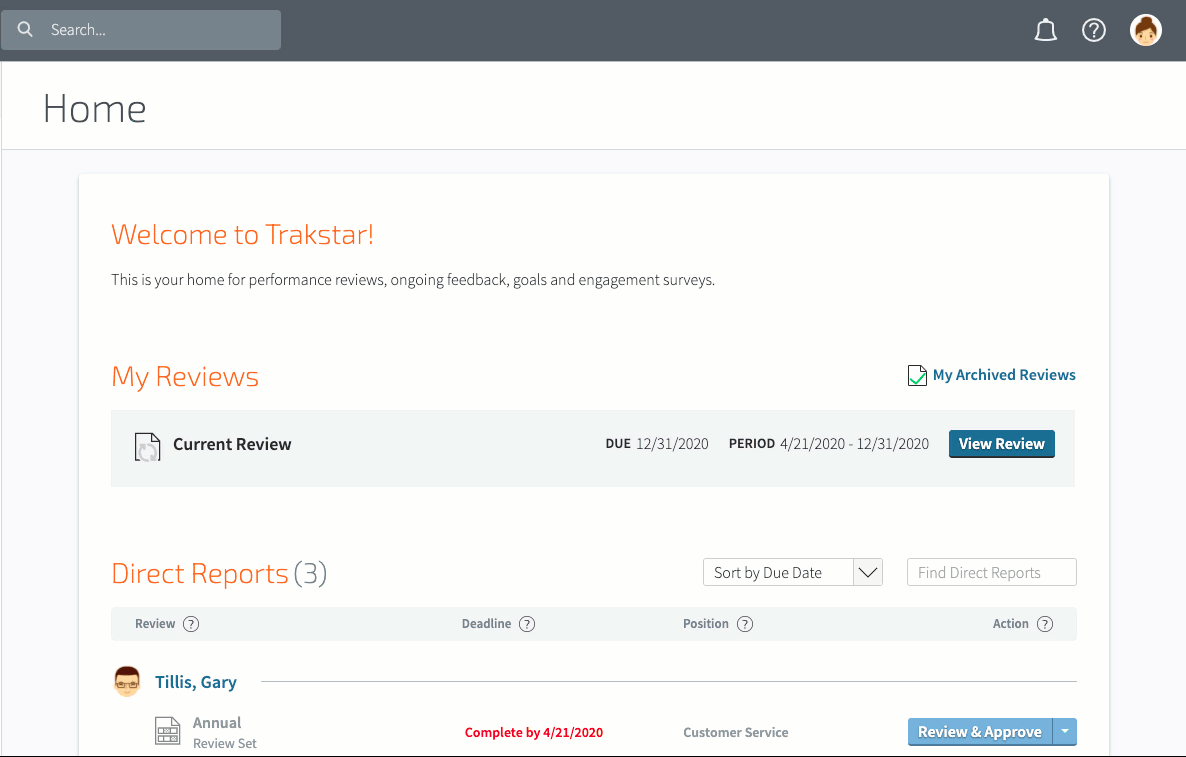Best Practices for Modern Performance Management
Posted by Dave • May 29, 2020 • 6 min read
For a long time, organizations took a simplistic approach to evaluating employee performance. Once a year, managers filled out the same appraisal form for each direct report and the results were used to determine raises, promotions, and other workforce management decisions.
Employees unsurprisingly grew to resent this process. The annual review had major ramifications but its accuracy left a lot to be desired. An employee’s professional outlook was impacted by the ratings they received on a handful of generic competencies.
As experience with annual performance reviews grew, its other disadvantages became apparent:
- Managers tended to recall the employee’s most recent successes and failures while overlooking the ones that occurred earlier.
- One-size-fits-all appraisal forms failed to result in specific feedback applicable to an individual’s job.
- The process was reactive and lacked on-going feedback employees could act on in the moment.
- Employees were the subject of reviews but not invited to participate in the evaluation process.
- An individual’s evaluation was based completely on their manager’s thoughts and opinions.
Organizations that take a smart performance management approach don’t experience these challenges. They accurately measure the effectiveness of every team member and provide consistent, relevant feedback that helps them improve at their craft. Let’s review modern performance management best practices your organization can experience simply by implementing a solution like Trakstar.
Provide feedback in real-time
Modern performance reviews can still occur on set dates on the calendar. But feedback should be provided frequently so employees continuously improve in between formal evaluations.
Each team member should meet with their manager weekly or at least monthly to discuss what they’re working on, the challenges they’ve encountered, and how they’re generally feeling about their job. Encourage managers to document the main takeaways from these meetings so they have a detailed record to consult when completing quarterly or annual performance reviews.
How Trakstar helps: Our note-taking feature allows both managers and employees to document milestones in a centralized solution. We also offer a short questionnaire employees complete before a check-in with their manager to ensure the conversation is productive.
Set employees up to contribute to the organization’s success
Your employees want to do work that makes a difference and you want them focused on relevant tasks. Modern organizations cascade goals, meaning every employee has objectives that contribute to their team’s success, which in turn impacts organizational goals.
Goal setting not only empowers an employee to produce meaningful results. Specific objectives also allow you to monitor their progress and provide specific feedback that applies to their job.
How Trakstar helps: Set goals for every employee in your organization within the performance management solution. Managers can then coach direct reports based on the progress they’ve made toward their objectives.
Customize performance evaluation forms
It should come as no surprise that an employee’s performance appraisal is effective when it is tailored to their job. If you try to use the same review criteria for every employee, you end up with overly-simplistic forms that fail to account for the nuances of their role.
Every employee should be evaluated using a customized appraisal form that aligns with their specific job. Use their goals as the foundation for their evaluation, then round out forms with the behavioral competencies that are important to what they do.
How Trakstar helps: Customize employee evaluation forms for every team member. Include individual employee goals, your preferred competencies, and even the rating scale of your choosing.
Improve performance with professional development training
Performance-related conversations shouldn’t be retrospectives where employees are told what they should have done better. They should receive constructive feedback that helps them gradually improve and grow professionally.
These discussions are an opportunity to take stock of where the employee is at in their career and help them prepare to take the next step. They should work with their manager to create a professional development plan that will be revisited in future performance review conversations and catch-up meetings.
How Trakstar helps: Track employee development goals along with each team member’s role-specific objectives.
Tie performance to compensation and succession planning
From an organizational perspective, the goal of performance reviews is to identify who is succeeding and who is underperforming so you can act accordingly. But to do so, you need to effectively evaluate every team member’s performance.
Since modern performance management practices accurately gauge how each employee is doing at their job, you can confidently base workforce management decisions on evaluation scores. HR and leadership teams should use the results to take a methodical, data-driven approach to compensation and succession planning.
How Trakstar helps: Define performance evaluation score thresholds employees need to surpass to be eligible for a pay increase. You can also ask managers to complete a questionnaire focused on if a direct report has earned a raise
Additionally, managers evaluate each employee’s leadership potential (along with their performance in their current role). Every employees’ scores are displayed in a scatter plot graph known as the 9-box grid which can be used for succession planning.
Optimize performance management
Performance reviews are no longer a formality everyone begrudgingly participates in once a year. Modern performance management is an on-going process meant to promote employee productivity and happiness.
Forward-thinking organizations are constantly striving to improve how they evaluate employee performance. They use the large amount of data made available to them to make smart decisions based on evaluation results and refine the review process.
How Trakstar helps: Generate various reports you can use to optimize your performance management process. You can identify rater biases, view performance improvements over time, and compare evaluation scores, to name a few examples.
Make employees evaluators
Employees are not only receptive to evaluations when they’re invited to participate in the process. Evaluations are more accurate when they include input from multiple people.
With a modern performance management approach, employees are asked to review themselves and their teammates. Self-appraisals give an employee a voice in their review and help the manager identify where they are already striving to improve.
And 360-degree feedback widens evaluations to include the different people an employee interacts with while doing their job. A variety of perspectives counters any biases and flaws in a manager’s review, making for more precise scores.
How Trakstar helps: Collect self-appraisals from every employee and form a 360-degree feedback process that includes multiple raters evaluating colleagues on relevant competencies.
Ask employees how they’re feeling
Employee productivity and happiness go hand in hand. A person who loves their job gives maximum effort and delivers outstanding results. And they feel good knowing their work has a positive impact on the organization.
Gaining insight into employee engagement is challenging since team members won’t openly talk about negative workplace experiences. Sending anonymous surveys containing the right questions helps your organization learn how to create an environment that maximizes both employee performance and happiness.
How Trakstar helps: Discover how your employees are feeling with our pre-built surveys that measure engagement in a variety of areas or by creating a custom poll on any topic relevant to your organization. Results are collected in Trakstar and easy to understand with our powerful analytics and real-time dashboards.
Modernize performance management in your organization
If your organization is serious about employee performance and engagement, it’s time to evolve past occasional reviews and implement the best practices outlined in this article.
Trakstar will help your organization modernize its performance management process. Request a live demo today!
Don't Miss Out on More Great HR Articles!
Subscribe to get the latest, greatest HR and Talent Development content straight to your inbox.


